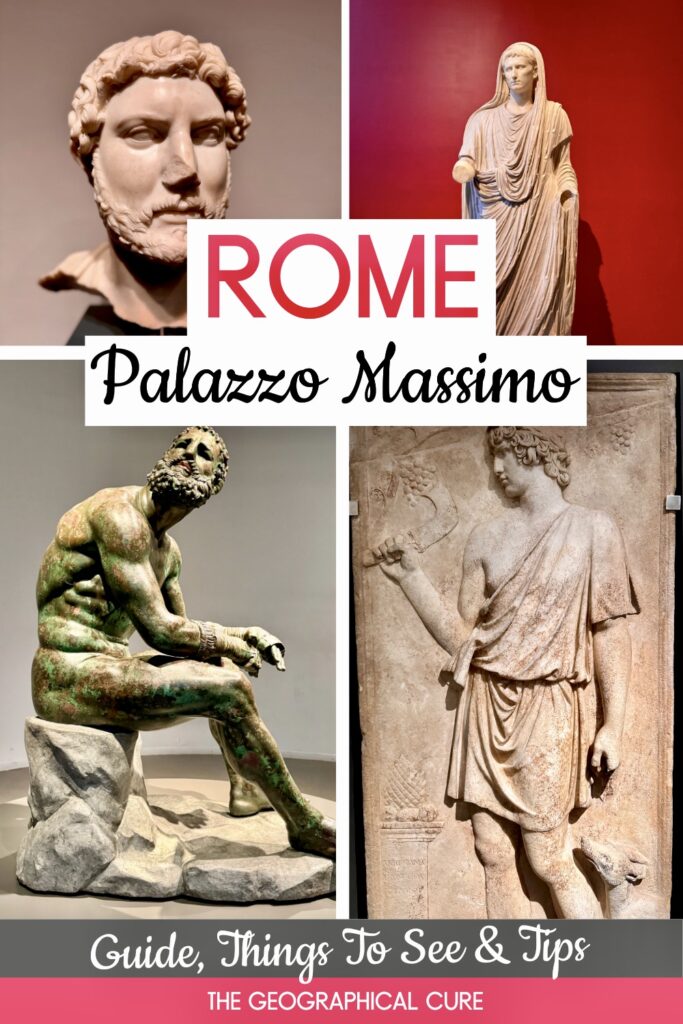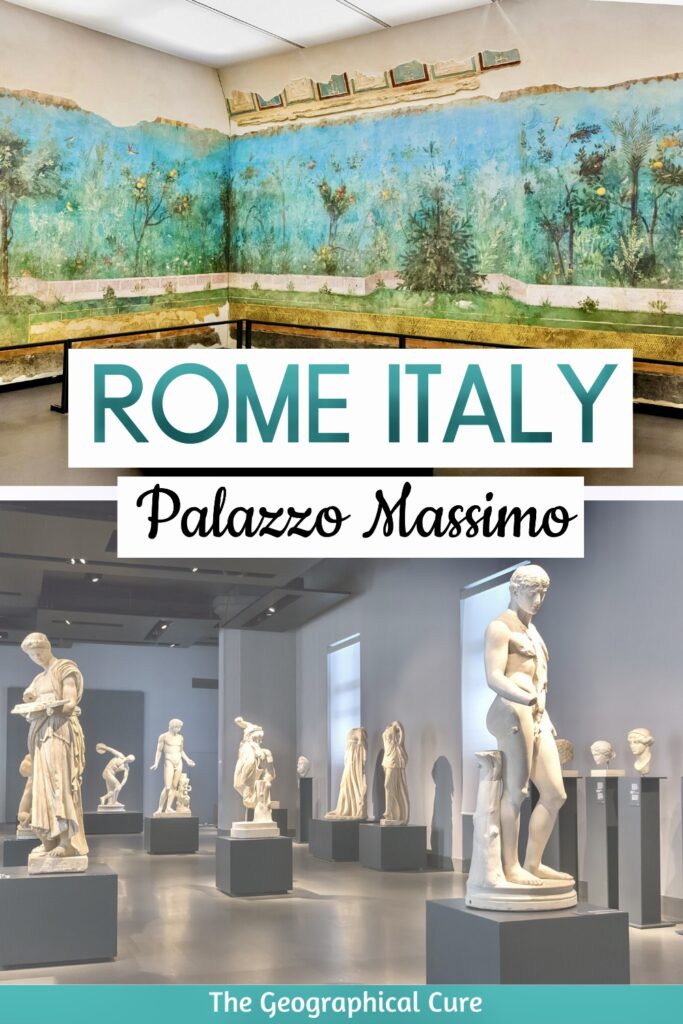I knew I would like Palazzo Massimo alle Terme before arriving. But it kind of bowled me over.
I came to see the ancient Greco-Roman sculptures and the frescos from the House of Livia on Palatine Hill. But I found so much more!
At Palazzo Massimo, you’ll find magnificent mosaics, frescos, busts, paintings, jewelry, and coins. It’s give you a breezy overview of the history of Ancient Rome.
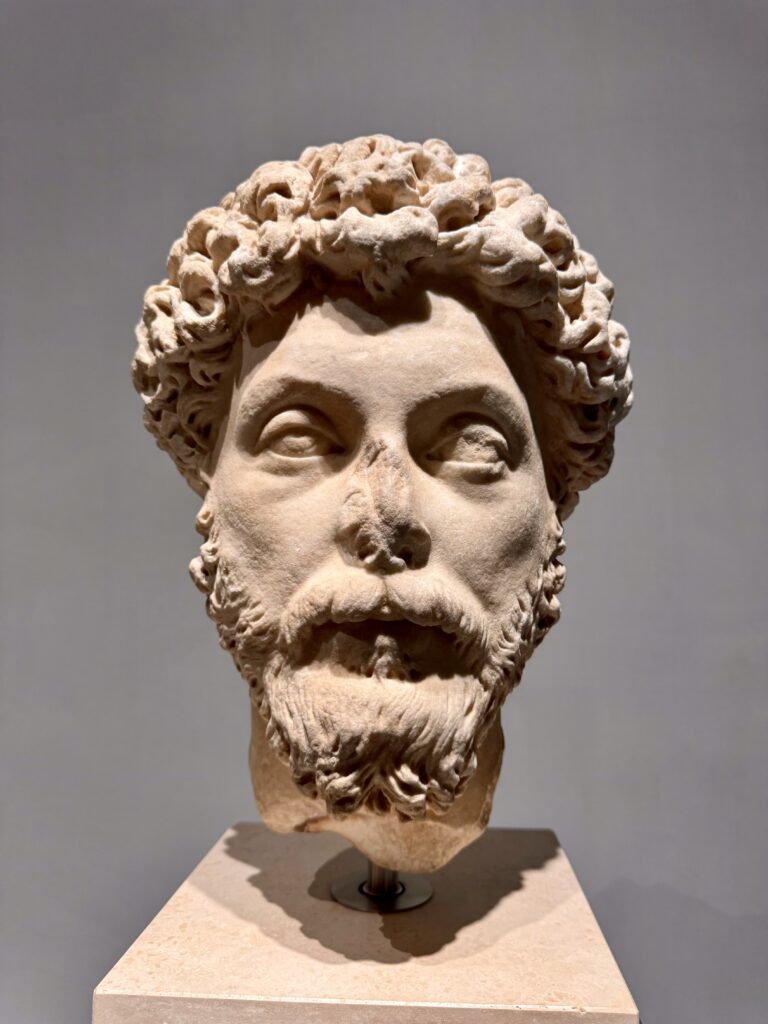
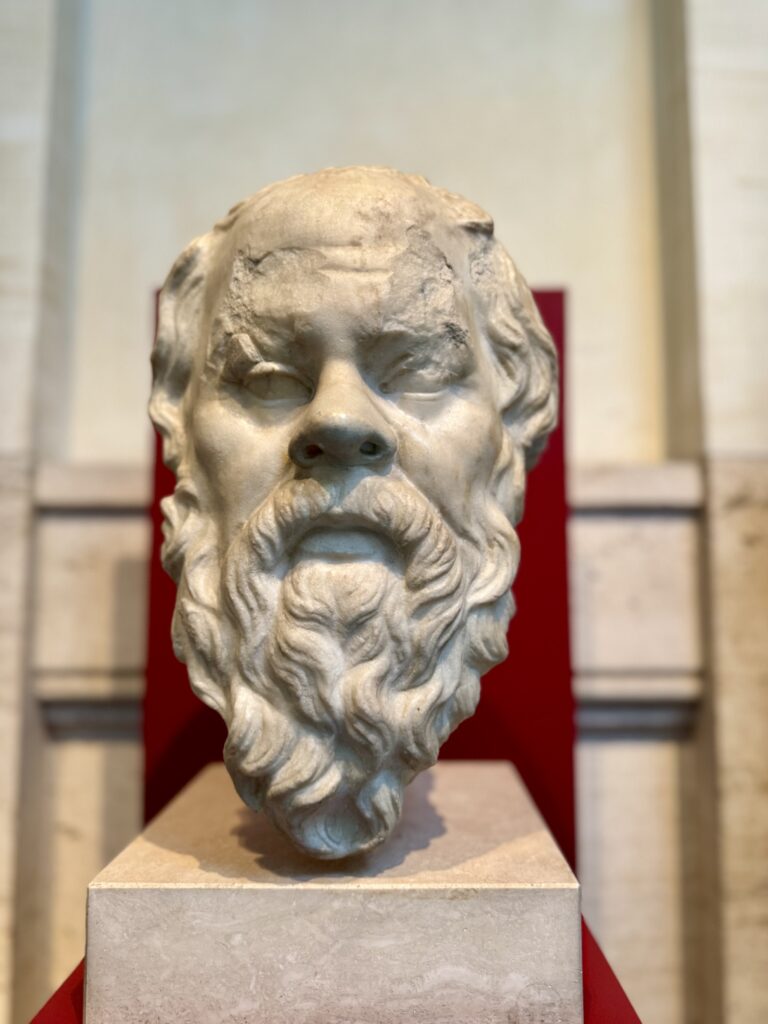
The museum is housed in a palazzo — not very attractive one from the outside — across from Rome’s Termini station. The collection is displayed over four floors in airy galleries.
Here’s what you will see:
- Basement: coin collection (closed when I was there)
- Ground floor: Greco-Roman sculpture and busts
- First floor: Roman Emperor portrait busts, sculpture, and rooms dedicated to Hadrian and Trajan
- Top floor: frescos, stuccos, and mosaics from 1st to 3rd century villas, garden frescos from the House of Livia
The two big highlights for me were the Boxer at Rest Greek sculpture and the House of Livia frescos.
>>> Click here to book a museum tour with a PhD
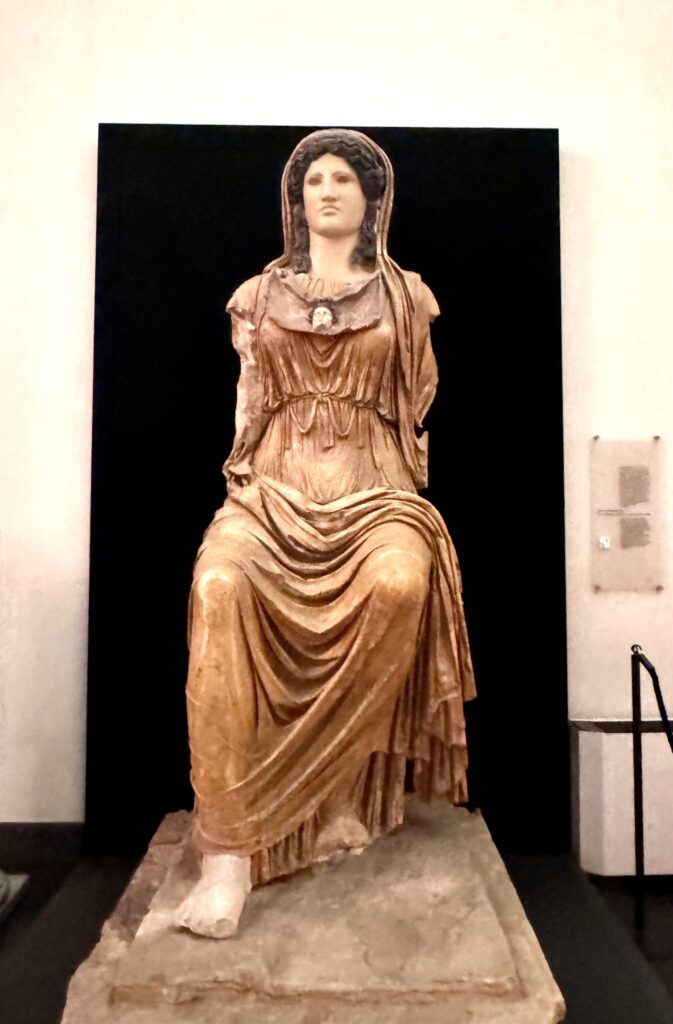
What To See At Palazzo Massimo
Here are the must see highlights of the museum and what you can expect.
Statue of Minerva
The first artwork you’ll come upon on your museum visit is the rather unnerving statue of the Roman Minerva (Athena in Greek).
It’s big, it’s gaudy, it’s a weird goddess from a pagan cult. She’s made of different colored marbles and was painted to look as lifelike as possible.
The state bears the hallmarks of works dating from the second half of the 5th century BC by the Greek sculpture Phidias. This one likely dates from the time of Augustus. The face and neck are modern reproductions.
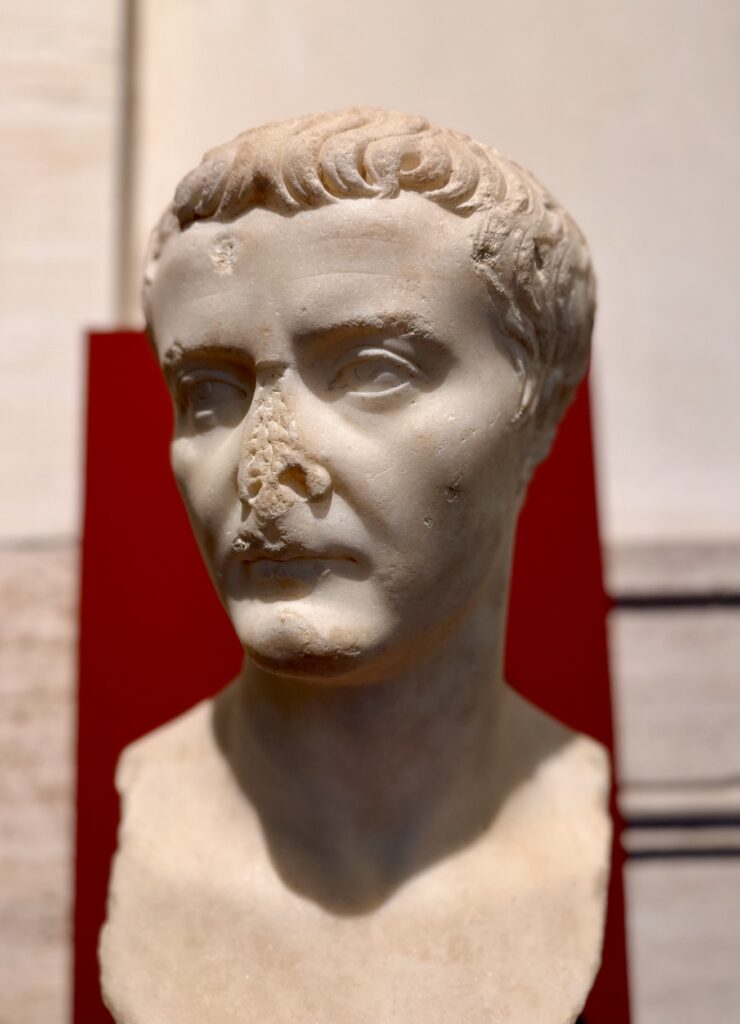
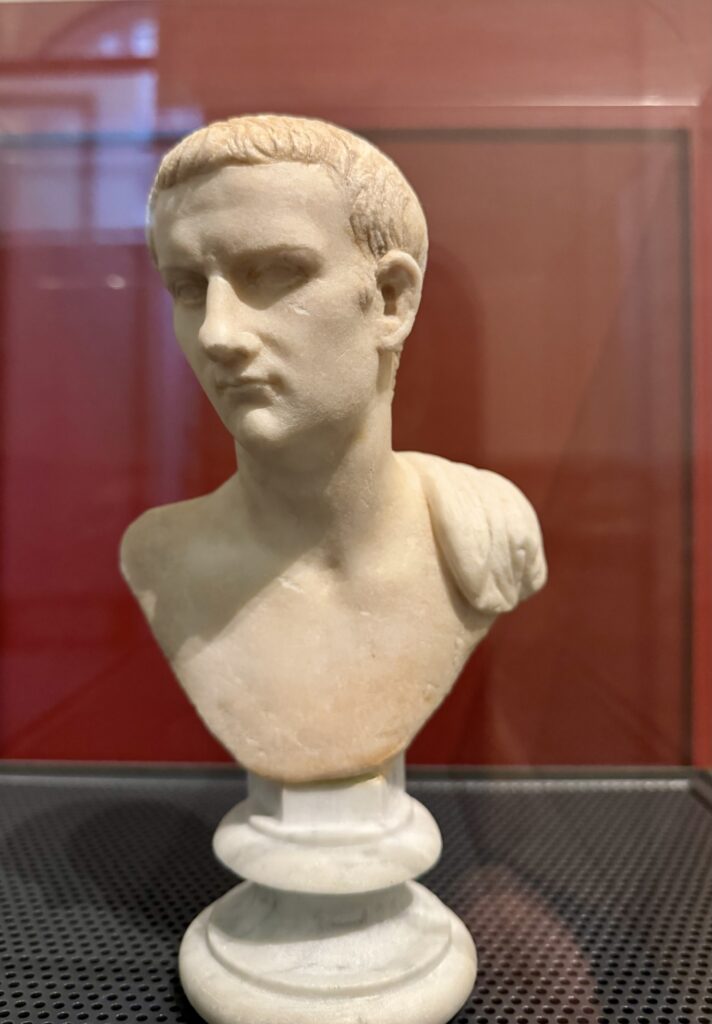
Portrait Busts From The Republic
There are several rooms with no nonsense busts of the people who founded Rome and the Julio-Claudian dynasty.
Their faces are brutally realistic, not idealized like Greek sculptures. Romans wanted life-like statues to remember them by.
The most famous bust is of Julius Caesar. But it was on loan when I visited!
Some scholars believe it’s a real likeness — prominent brow, high cheekbones, and male pattern baldness. Others say it doesn’t resemble known images of him.
You’ll see busts of Rome’s Greek mentors — Alexander the Great, Socrates, Epicurous, etc.
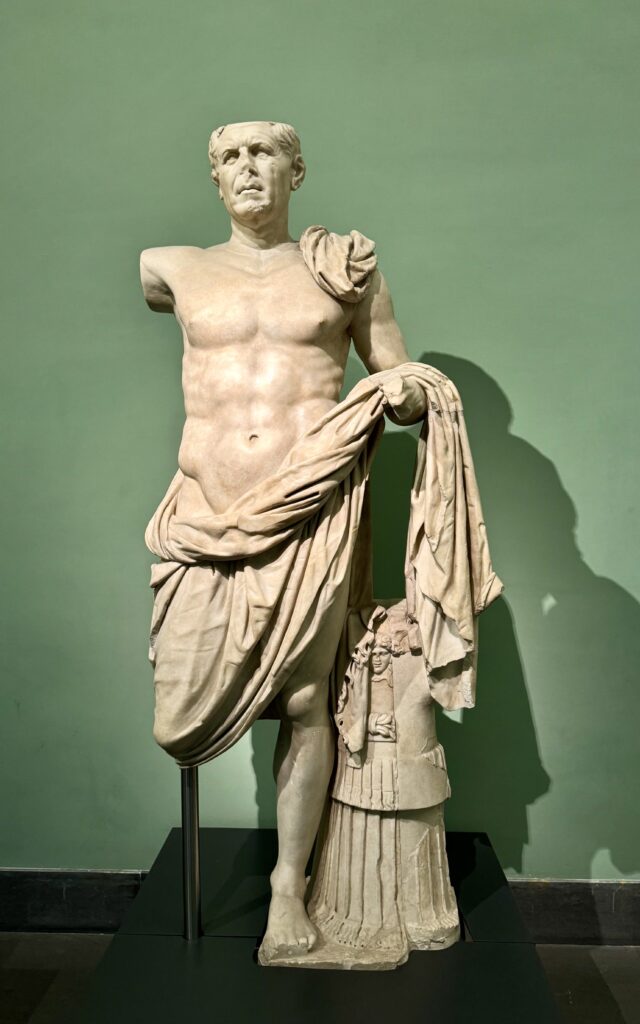
General of Tivoli
This is a masterpiece of honorary sculpture from the late Republican period. It was found at the Temple of Hercules and may portray one of Sulla’s lieutenants.
It portrays an elderly person with a young, nude body. His cuirass embossed with the head of Medusa provides his support. The right arm was likely originally raised.
The style derives from Hellenistic designs of heroic nudity. He has an authoritarian, imposing stance and markedly realistic facial figures.
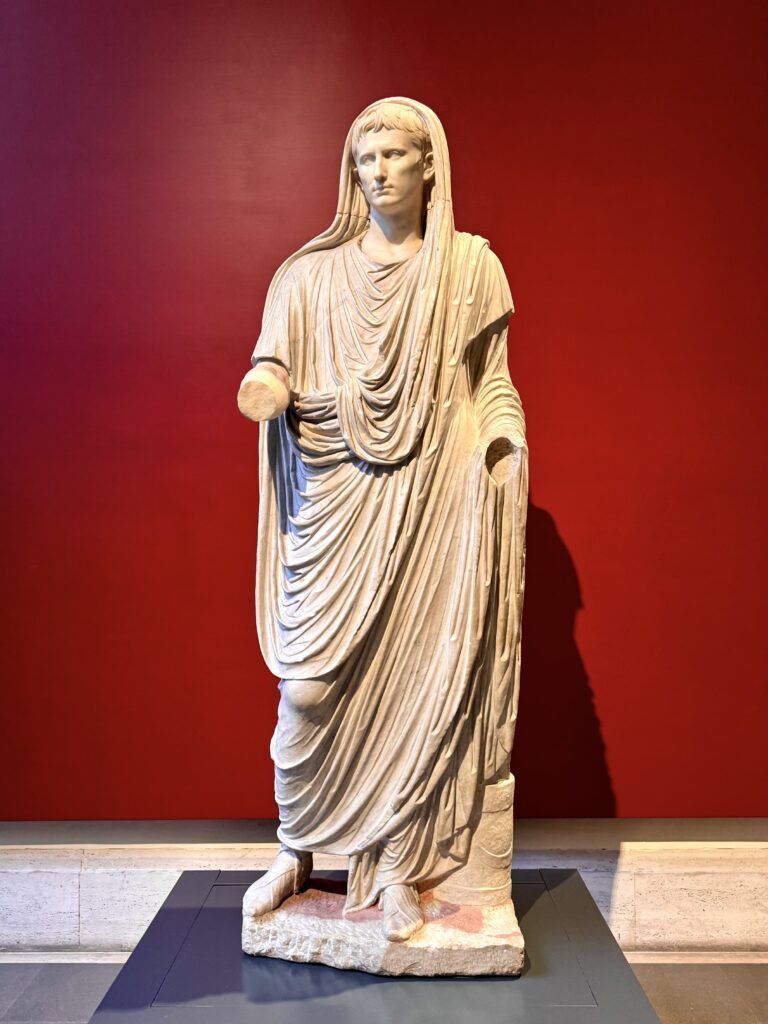
Via Labicana Augustus
In this sculpture, the Emperor Augustus is solemnly intent on celebrating the sacrifice of the gods. The devout sculpture was probably created around the early 1st century BC.
Augustus is exceedingly handsome here. It’s a civil image.
He’s taken off his armor and laurel leaf crown, donning the simple hooded robes of a priest. The folds of the fabric are incredibly rendered.
In the same room, you can admire the beautiful Ostia altar, dedicated to Mars. And several of Augustus’ family members — Livia (his wife), Caligula, and Tiberius.
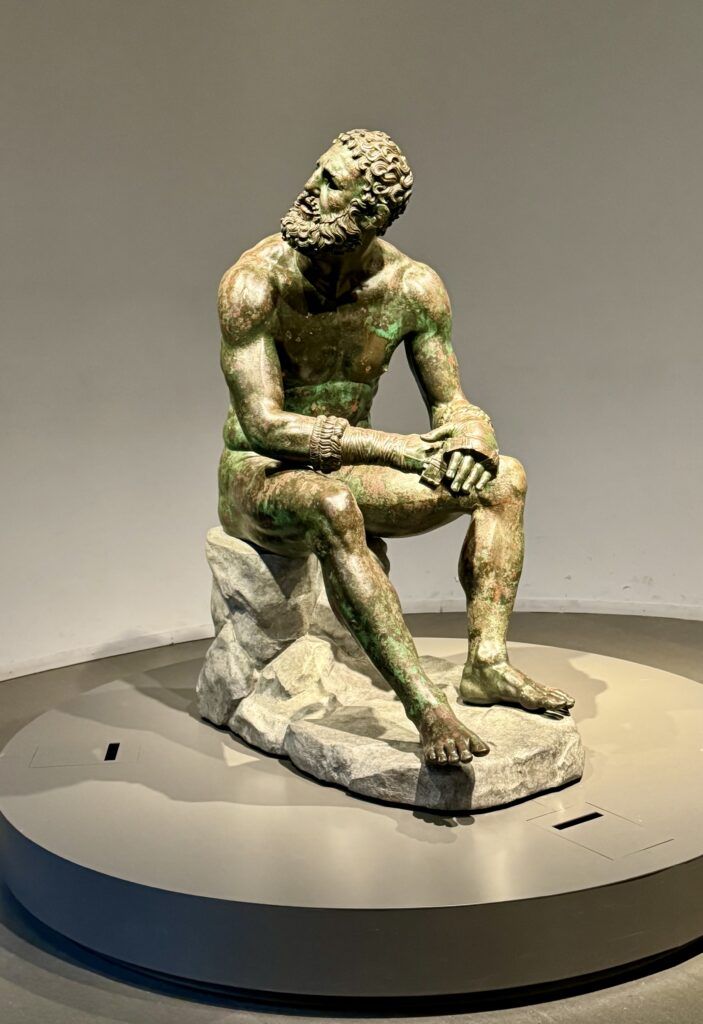
Boxer At Rest
The most famous sculpture in the museum, indeed one of the finest in the world, is the Boxer at Rest. The sculptor is unknown, but the piece is dated to between 350 B.C. and 550 B.C
The bronze sculpture is in superb condition. It was discovered in 1885 on the Quirinal in Rome, a site once occupied by the Baths of Constantine.
The moving sculpture has a dedicated space of its own, and justifiably so. Just looking at it is a profound experience.
The Boxer is captures a moment of exhaustion and alertness. The boxer glances upwards as if responding to a crowd’s roar. His body and boxing gloves are rendered with preternatural naturalism.
His face is marked by the physical toll of the fight. He has a flattened, broken nose, half-shut eyes, battered ears, and swollen lips. It’s so effecting, you will be hard pressed to look away.
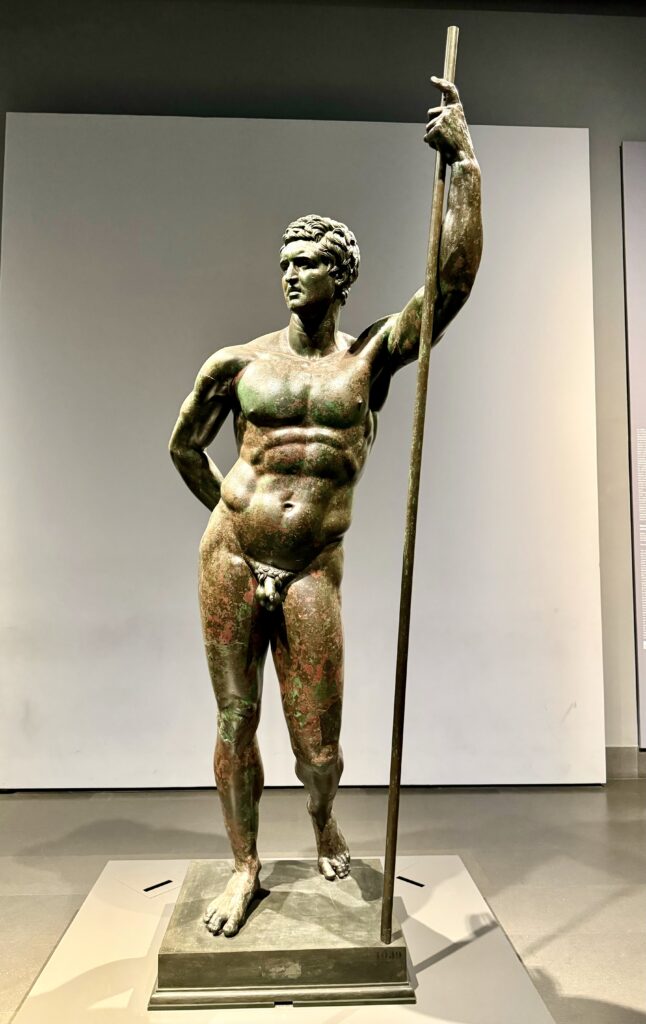
Hellenistic Prince
In the same room you can see another rare Greek sculpture, the so-called Hellenistic Prince. It was discovered on the Quirinal Hill in 1885.
The sculpture, like the Boxer at Rest, was underground and appeared to be deliberately hidden from prying eyes. Very few Greek sculptures in bronze are preserved today.
He’s naked and leaning on a spear, likely trying to channel either Alexander the Great or Hercules.
Some historians claim the statue came from the Baths of Constantine. But it was more likely from a private residence on Quirinal Hill.
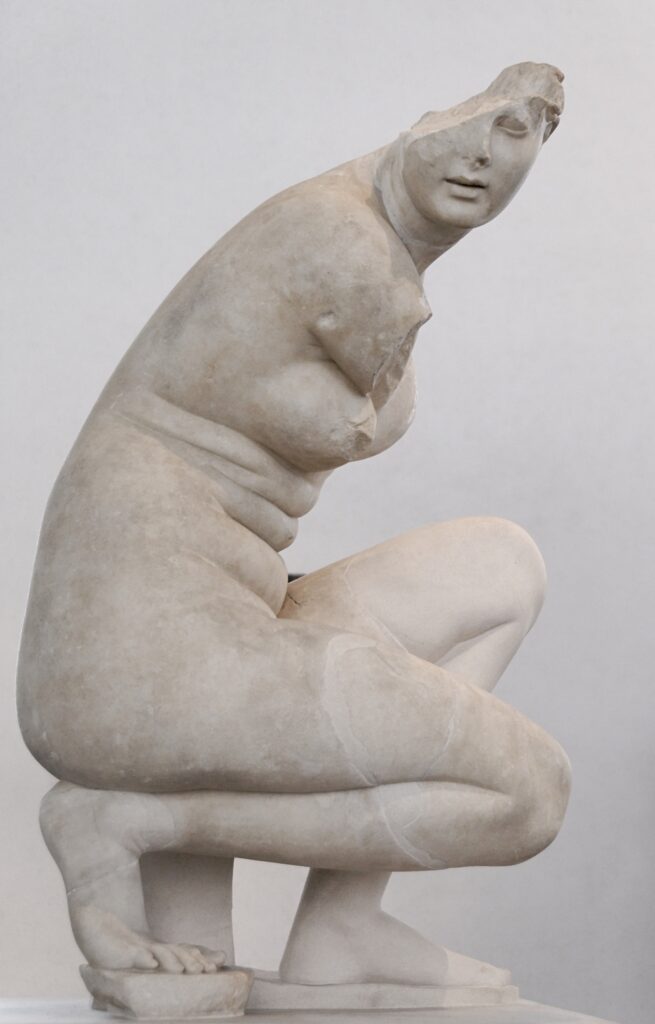
Crouching Aphrodite
In this sculpture, the goddess of beauty crouches while bathing and then turns to admire herself. She’s in a relaxed and vulnerable pose, emphasizing her sensuality.
Her whole body seems to be in motion. Yet she’s perfectly still.
There’s also a standing Aphrodite sculpture, where she’s modestly covering her body. It’s similar to the Capitoline Venus in the Capitoline Museums.
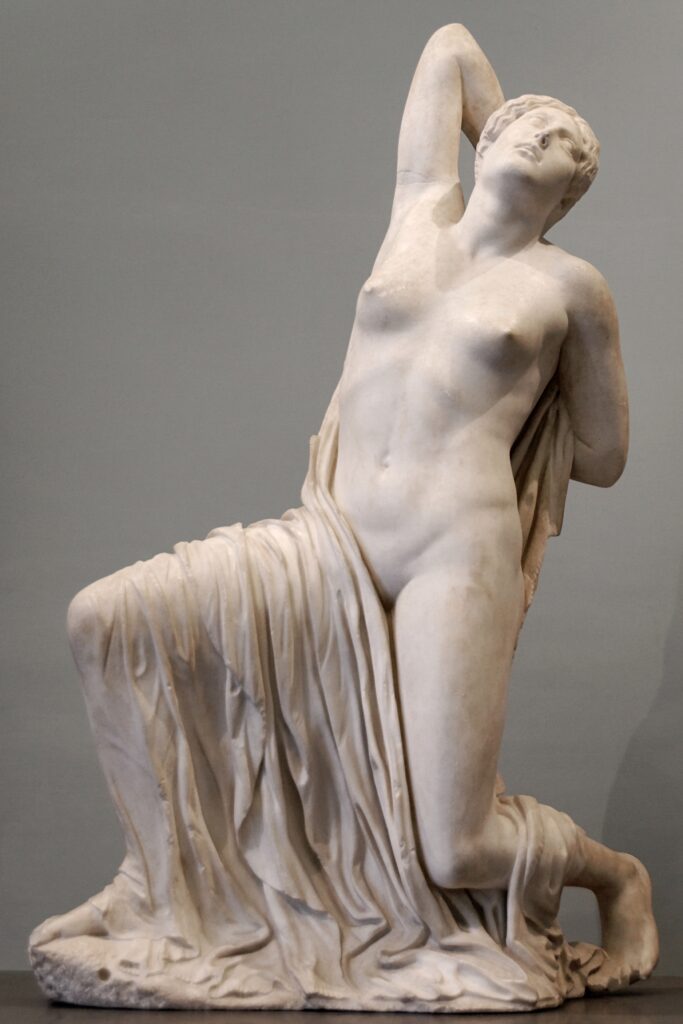
Young Woman Punished By Death
This Greek masterpiece from the 5th century BC was found underground in 1906.
The Dying Niobid was likely was shot in the back by Apollo for boasting that she had many more children than Apollo’s mother Leto.
The woman has fallen on the ground, vainly trying to draw out an arrow that struck her in the back.
The sculpture was once part of a pediment decoration of a Greek temple. It was moved to the Horti Sallustiani (gardens) in Rome during the Augustan period.
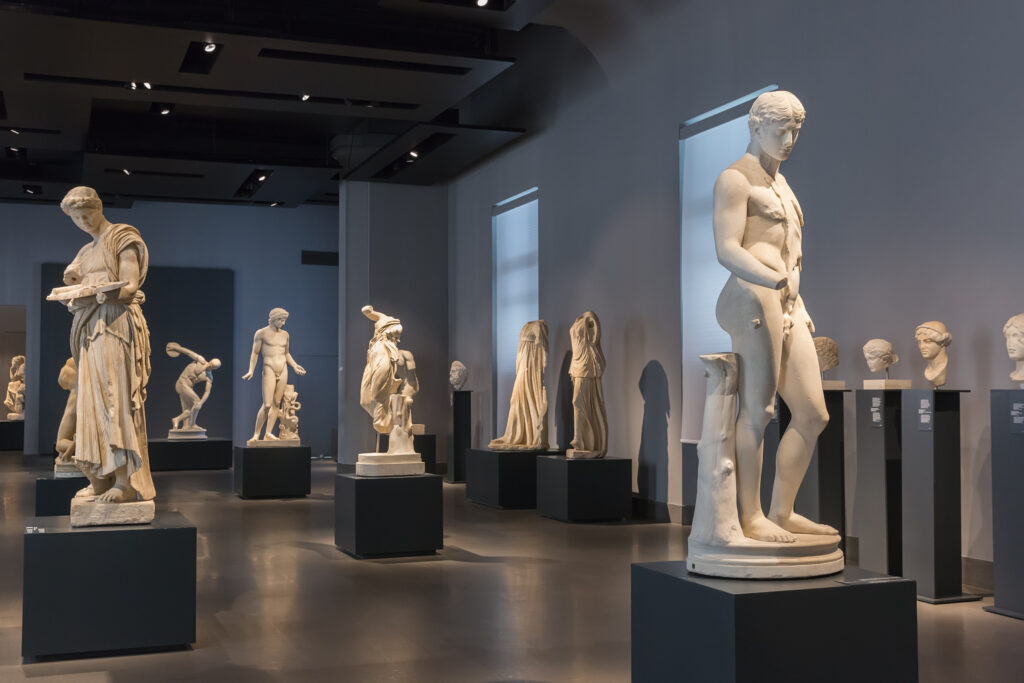
Lancellotti Discobolos
In this marble statue, Discobolos, an athlete winds up, about to unleash a discus.
The sculptor has frozen the statue in a moment of pent up energy, so you can see his muscles at work. With his perfect abs and geometrical perfection, he almost looks god-like.
This is the best preserved copy of the Greek original by Myron in 450 BC. The Massimo’s version dates from 140 AD.
Statues of athletes were usually found in public baths. But this one was discovered in 1781 in Villa Palombara, owned by the Massimo family. There are copies of the sculpture in the Vatican Museums and the British Museum.
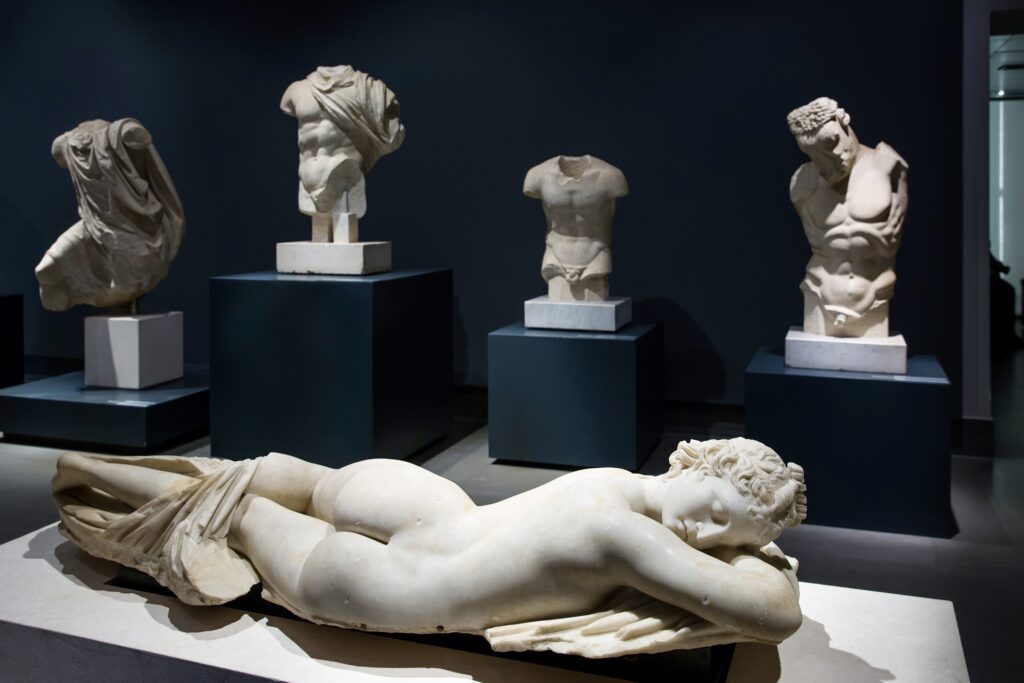
Sleeping Hermaphrodite
This sleeping youth is a sensuous statue discovered in a private setting. The youth is using his cloak as bedding and shown resting softly on his right arm.
At first site, you might think it’s a sleeping Ariadne. but that’s not so.
From the rear, the youth appears female. From the other angle, he appears male.
According to legend, Hermaphroditus was born to Hermes and Aphrodite. There are several versions the Sleeping Hermaphrodite (Louvre, Borghese Gallery). They were likely all based on the statue by the Greek artist Polycles.
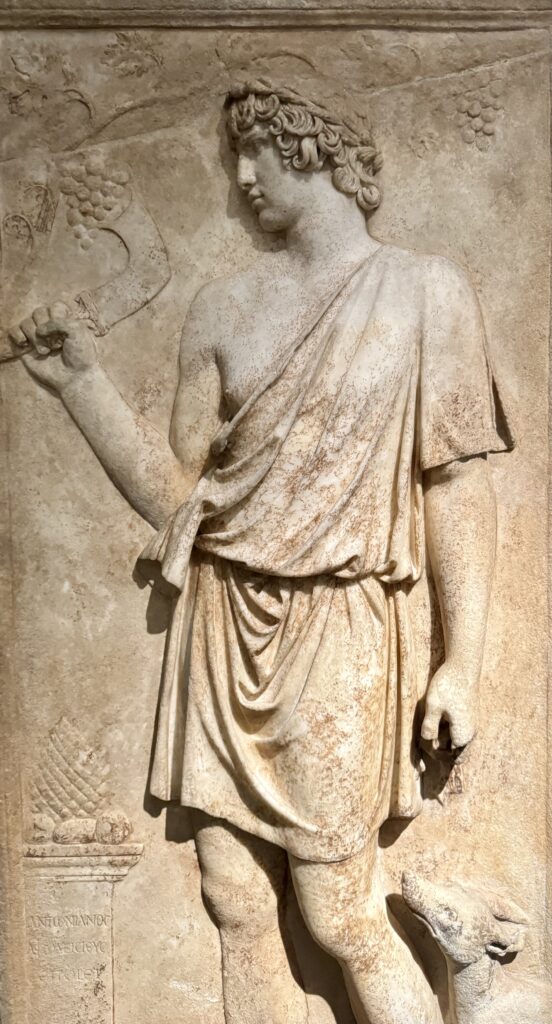
Relief of Antinous
Antinous was the Greek youth adored by Emperor Hadrian. he lost his life in the Nile amid mysterious circumstances.
After his death, Harden was heartbroken.
He deified Antinous and commissioned images that portray him as god. He also founded a cult known as the “Antinoan Mysteries.”
This gorgeous relief was created by Antonianos of Aphrodisiac. In it, Antinous is represented as the god of the woods Silvanus. He’s crowned by a pin branch and accompanied by a dog.
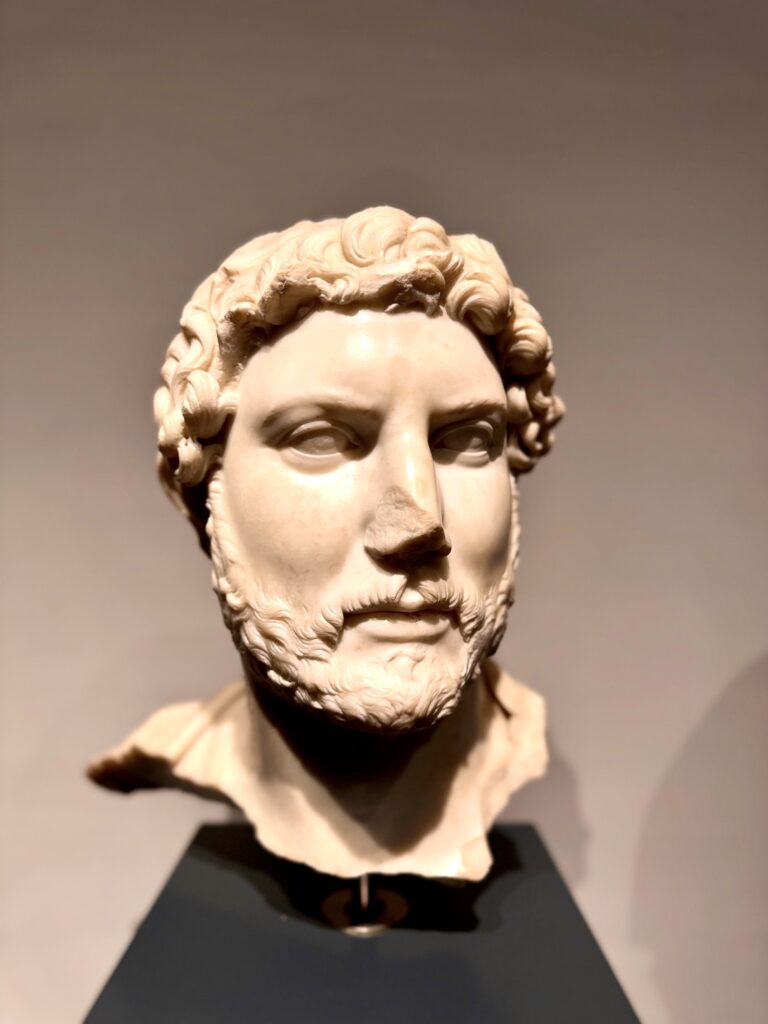
Bust of Hadrian
This is the #1 authentic representation of Hadrian. He’s shown at age 40, at the time of his investiture as emperor.
He has a neatly trimmed beard, which he made fashionable. He’s just missing a chunk of f his nose.
The Hadrian bust is flanked by the two loves of his life.
His wife, Sabina, who kept the home fires burning for her traveling husband. And his love Antinous, with whom he spent his last years at Hadrian’s Villa outside Rome.
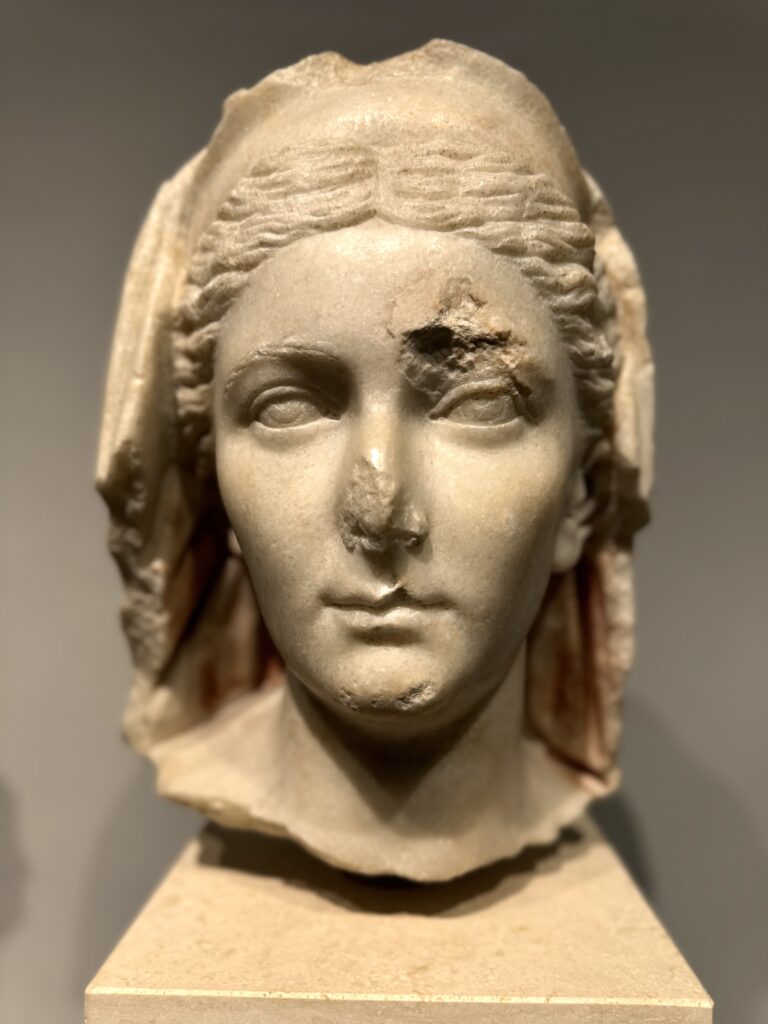
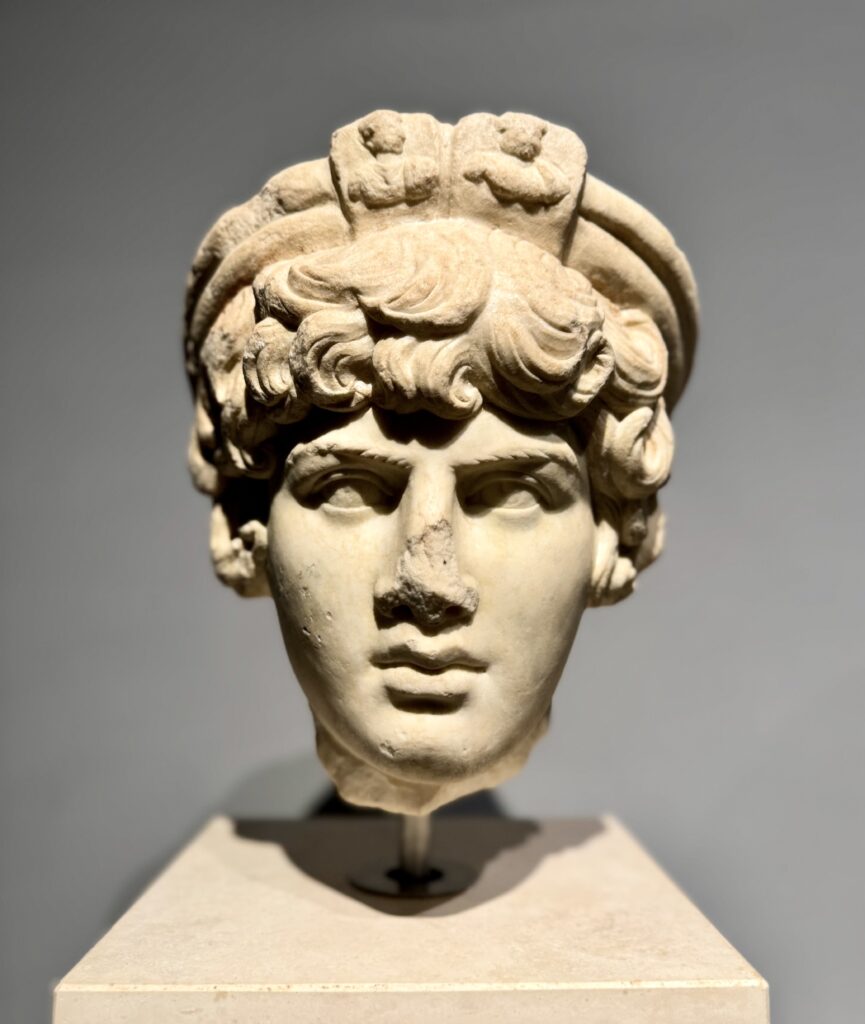
Frescos From The House of Livia
Probably the last thing you”ll come across in the museum, tucked away in back corner on the top floor, are the luscious frescos from the House of Livia.
Even if you’ve been to Pompeii or the Naples National Archaeological Museum, you won’t be prepared for the beauty of Livia’s garden frescos. They are mesmerizing.
Imagine having a subterranean dining room with an imaginary walled garden and orchard filled with trees, plants, flowers exotic birds, and fruits of all types. The walls seem to disappear, placing you in a garden of eve paradise.
The frescos were immensely popular when unveiled, kicking off a genuine vogue for garden paintings.
Incredibly, experts were able to remove the frescos from each of the long walls in her villa on Palatine Hill in a single piece. There are duplicates there now, which you can visit with the SUPER ticket (if the villa is open!)
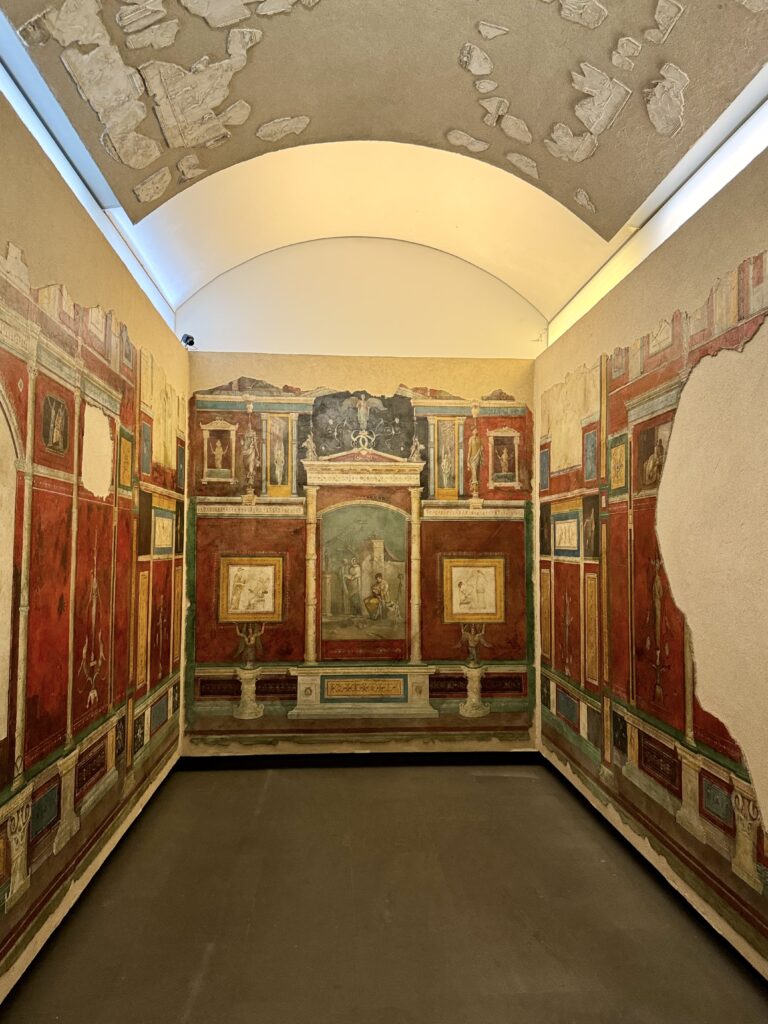
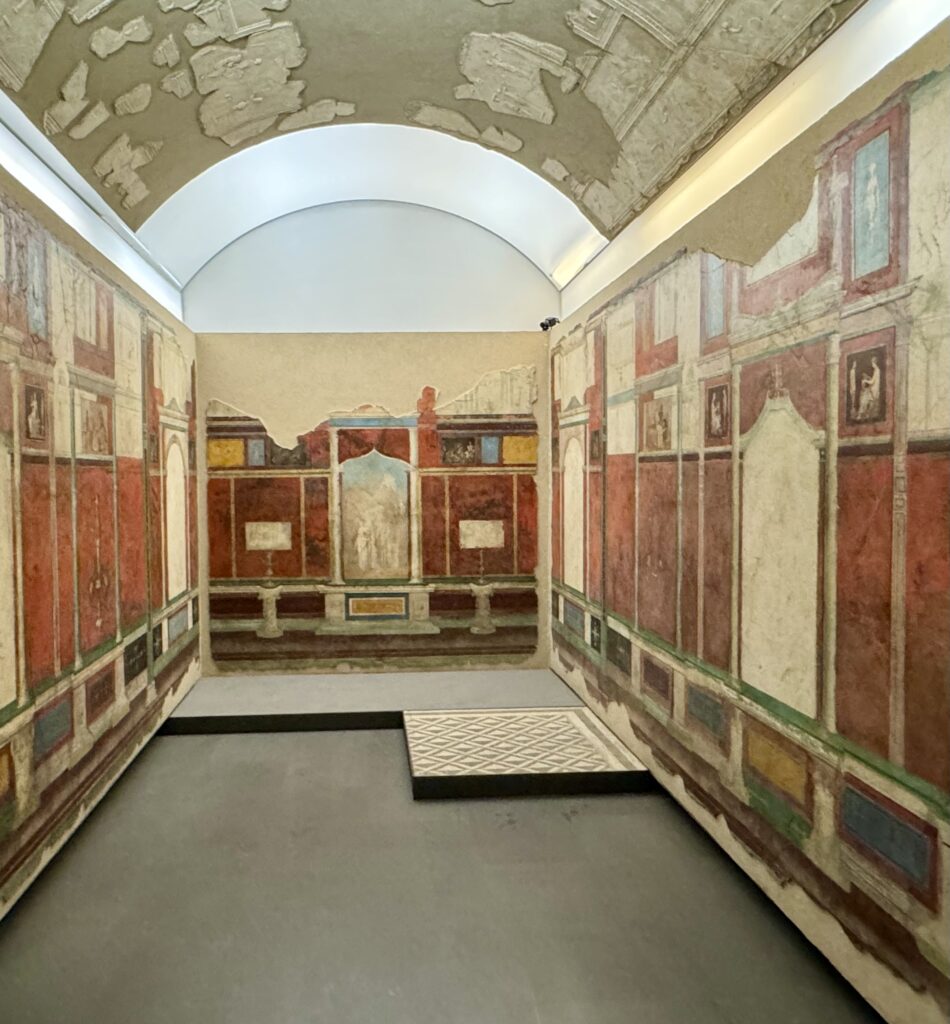
Frescos From The Villa Farnesina
Another staggering set of frescos come from the grounds of the Villa Farnesina in Trastevere.
They show the high quality of Roman painting. And attest to the luxury and complexity of the decorative programs of aristocratic homes.
The frescos are mostly architectural in style, with fake columns, friezes, and garlands. Mostly black, red, yellow, and blue colors were used.
There are entire rooms of frescos to admire. Three are bedrooms.
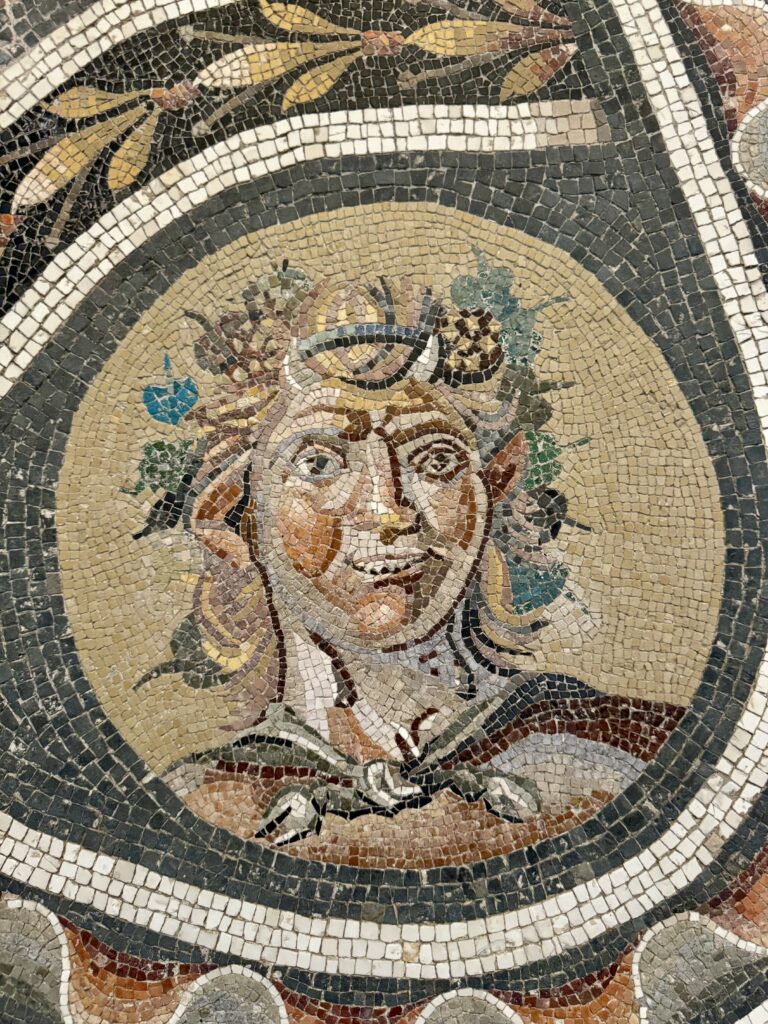
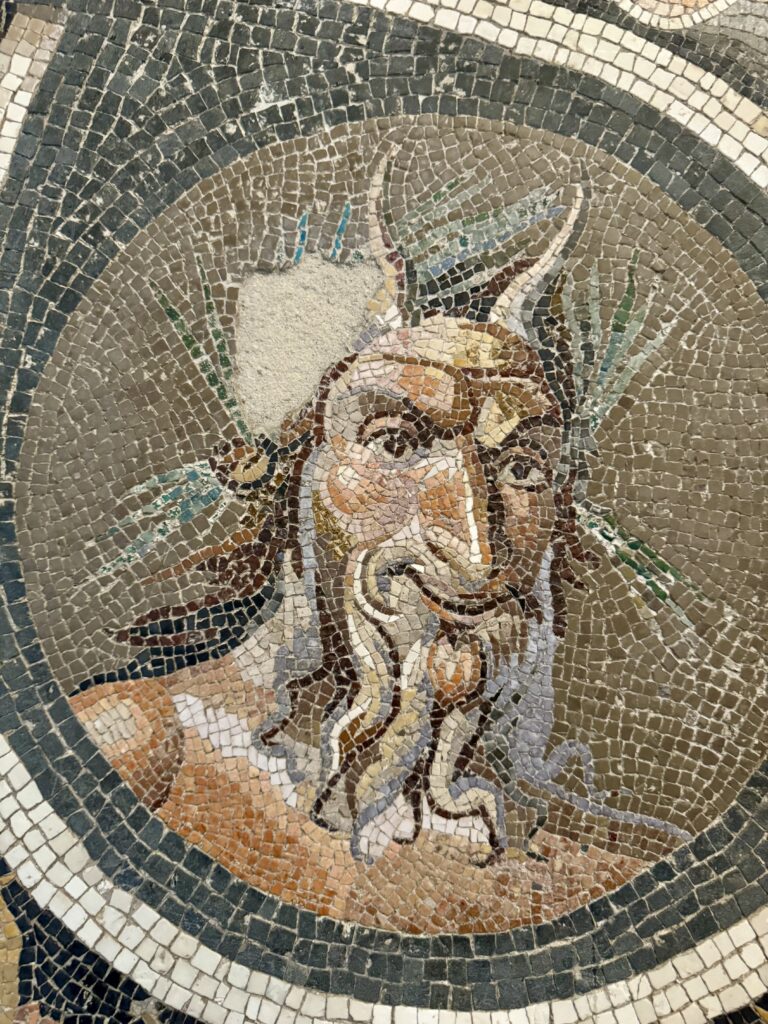
Mosaics
The museum boasts a diverse range of mosaics with mythological themes and decorative patterns.
The mosaics depict scenes from Greek and Roman mythology, stories of the gods, or charioteers. Some mosaics are purely decorative, showcasing intricate geometric patterns and designs
There are also scads of beautiful mosaics that were originally part of the floors in Roman houses and villas.
They depict scenes of everyday activities, such as dining, hunting, or gardening. The most important are from the Villa Baccana.
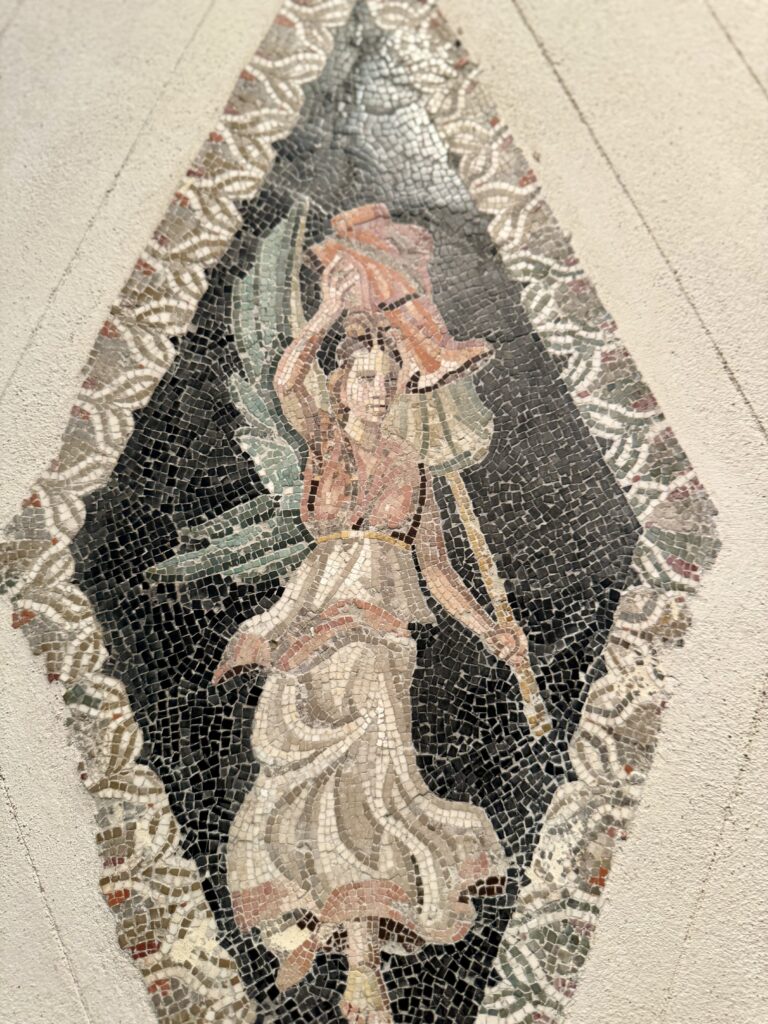
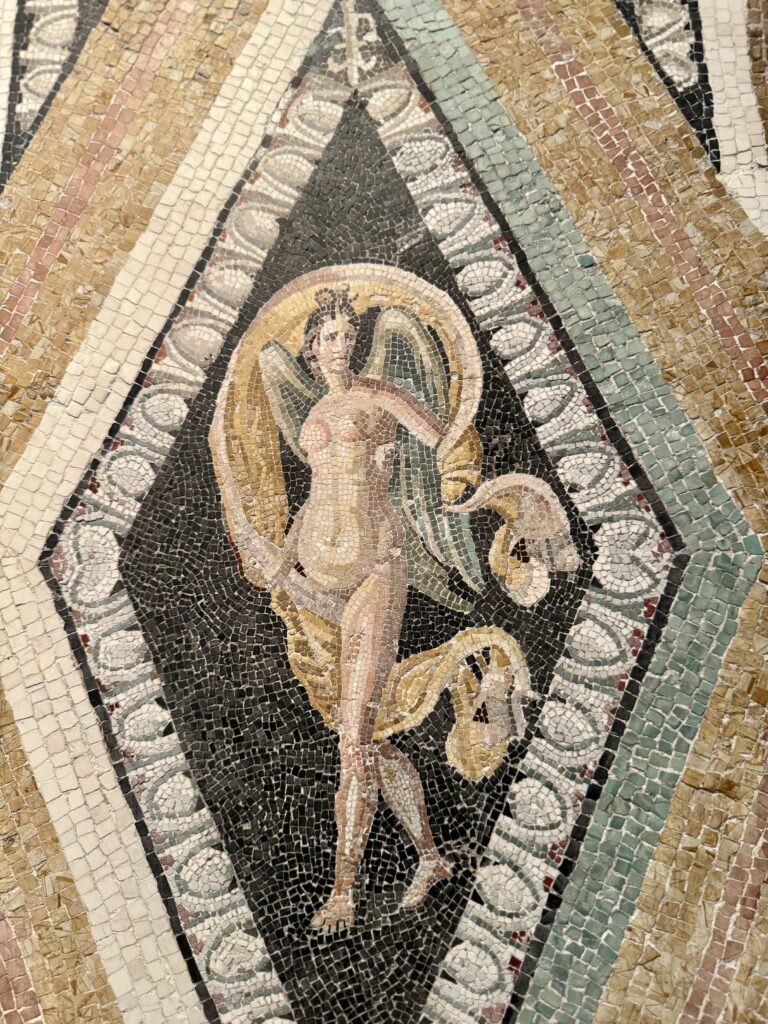
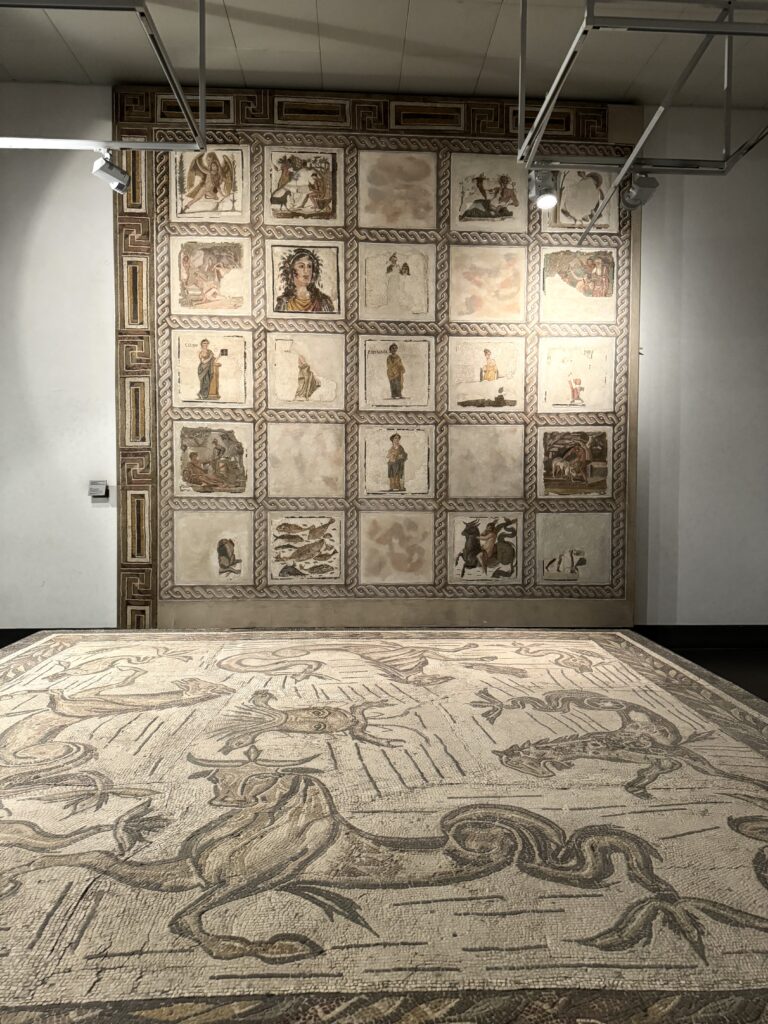
Practical Guide & Tips For Palazzo Massimo
Address: Largo di Villa Perreti 2. The museum is a few minutes walk from either the Repubblica or Termini metro stations.
Hours: Open Tuesday through Sunday from 9:30 am to 7:00 pm. Closed Mondays.
Tickets: 8 euros. You can also buy a combined ticket that includes the other National Museum of Rome sites (Palazzo Altemps, Diocletian’s Baths, and Crypto Balbi). The museum is also included in the Roma Pass.
Pro Tips:
The Massimo is rarely crowded except for the first Sunday of the month when admission is free. I would budget about 2 hours to see everything.
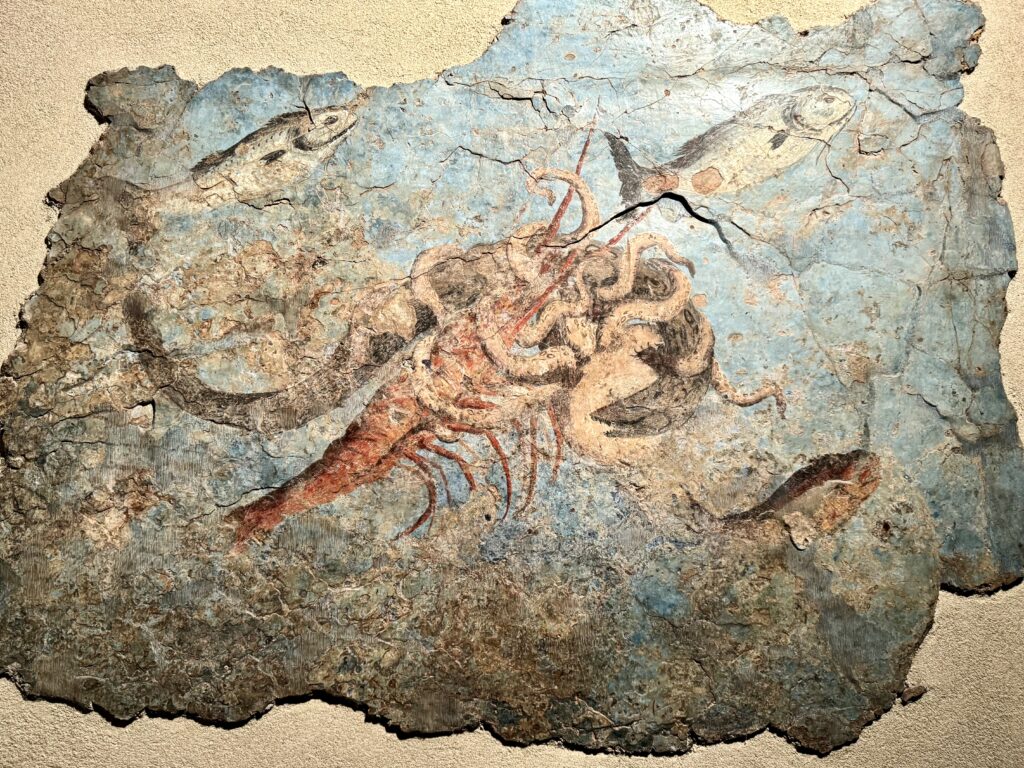
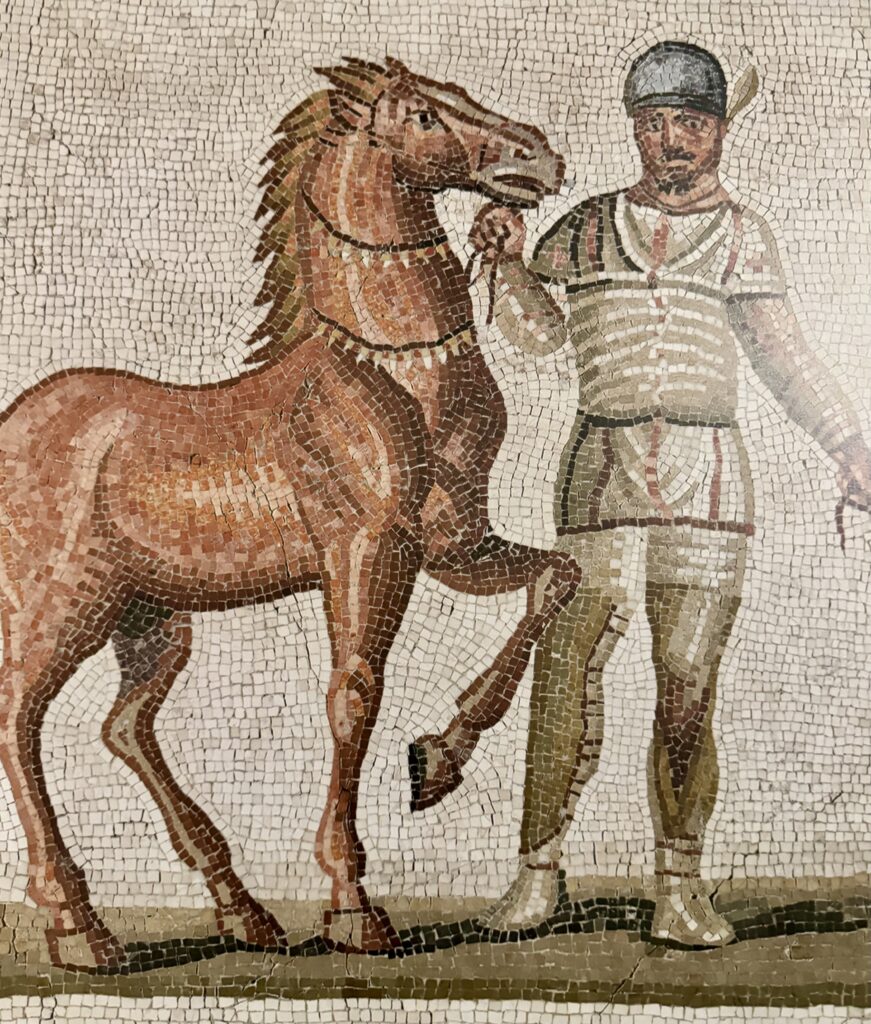
I hope you’ve enjoyed my guide to the Palazzo Massimo. You may find these other Rome travel guides useful:
- 8 ways to spend 1 day in Rome
- 3 day itinerary for Rome
- 4 day itinerary for Rome
- 5 day itinerary for Rome
- Best museums in Rome
- Hidden gems in Rome
- Archaeological sites in Rome
- Guide to the Borghese Gallery
- Guide to Palatine Hill
- Guide to the Roman Forum
- Guide to the Colosseum
If you want to visit Palazzo Massimo, pin it for later.

